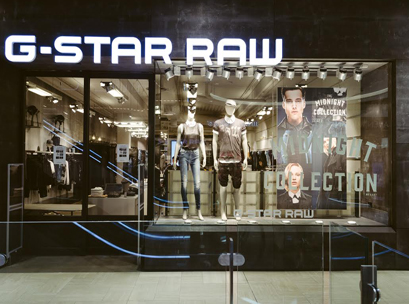Inside Retail PREMIUM speaks to the president geographies and sales for G-Star Raw International on plans for its Australian business. The retail arm of G-Star Raw Australia has been saved by its Amsterdam-based parent company, G-Star Raw International, following the collapse of local franchise operator, Denim Enterprises. Melbourne-based Denim Enterprises appointed Gess Michael Rambaldi and Andrew Reginald Yeo of Pitcher Partners as voluntary administrators on February 2. Prior to being placed
in administration, Denim Enterprises operated 21 standalone G-Star Australia stores in Australia.
Denim Enterprises was founded by directors, Nick and Candice Hirons, in 1996, who were previously stockists of the brand in their own denim boutique in Melbourne, D.inc.
The first D.inc stored opened on Little Collins St in 1996, followed by a second store in Prahran in 2001. The first standalone G-Star store operated by Denim Enterprises opened in 2003 at Melbourne Central.
This week, G-Star International confirmed it has taken over the existing retail stores of G-Star Australia. Following the takeover, expected to be finalised on May 18, it will operate 15 retail outlets (following the closure of several during the administration period), with an additional four stores in Perth to be run by a locally-based franchise partner.
The previous G-Star Australia model was in line with its global operations, where retail outlets are franchised operated, while wholesale, multi- brand stores, concessions, and e-commerce are parent-owned and operated.
In Australia, G-Star has concessions in Myer and David Jones as well as partnerships with multi-brand stores such as youth fashion retailer, Glue. G-Star operates a local head office in Sydney which is currently headed by country manager, Piet Poelmann.
Stefano di Martino, president geographies and sales for G-Star Raw International, told Inside Retail PREMIUM G-Star plans to open three new stores in Australia each year, but said expansion will be halted 2015.
E-commerce will continue to be operated by G-Star International, and it will look to add around 10 new senior management executives to the local operation.
G-Star’s new store concept, first unveiled in Australia at Emporium in Melbourne last year, will also continue to roll out, with the focus on revamping stores in Sydney and Melbourne.
“I think it would be best to first concentrate on the eastern side of the country. The model we want going forward is a mix of franchise and owner/operator. We want to open more stores going forward ourselves, but a good franchise partner could also come along,” di Martino said.
In February, following Denim Enterprises’ collapse, franchise and leasing consultant, Richard McDonnell, who worked with Denim Enterprises for more than a decade, accused the international franchisor of being too rigid in its approach and unwilling to adapt to Australian retail marketplace conditions.
McDonnell told Inside Retail PREMIUM that G-Star International’s “ridiculous” fitout costs, which he estimates to have been around $1.2 million (including stock), “openly selling product to competitors of Denim Enterprise”, and operating G-Star DFOs stores in locations nearby to Denim Enterprises’ stores, led to the collapse of the Melbourne-based franchisee.
di Martino told Inside Retail PREMIUM Australia is an important market for the brand and under the control of G-Star International there will “greater attention” on seasonality and future store locations, admitting, “we’re not going to open a lot of stores where multi-brand stores have a strong presence”.
“We’re trying to create different strategies between different chains of distribution to make sure that we can offer consumers multiple opportunities of product. We’re really focused on city mapping, and making sure in a city we don’t open too many stores. The market is very cramped, not just for us, for everyone,” di Martino said.
“Now that we own the operation we will invest more attention and care. We want to make sure that we have the right product in the market. I don’t think seasonality was an issue before, but we need to try and have the right price for the right product.”

